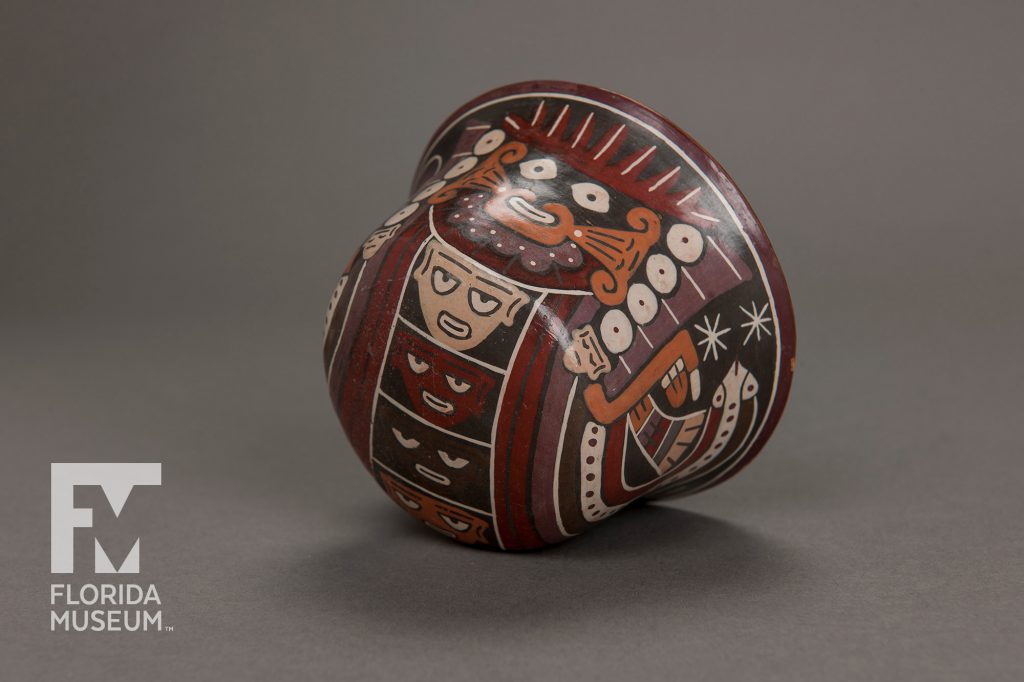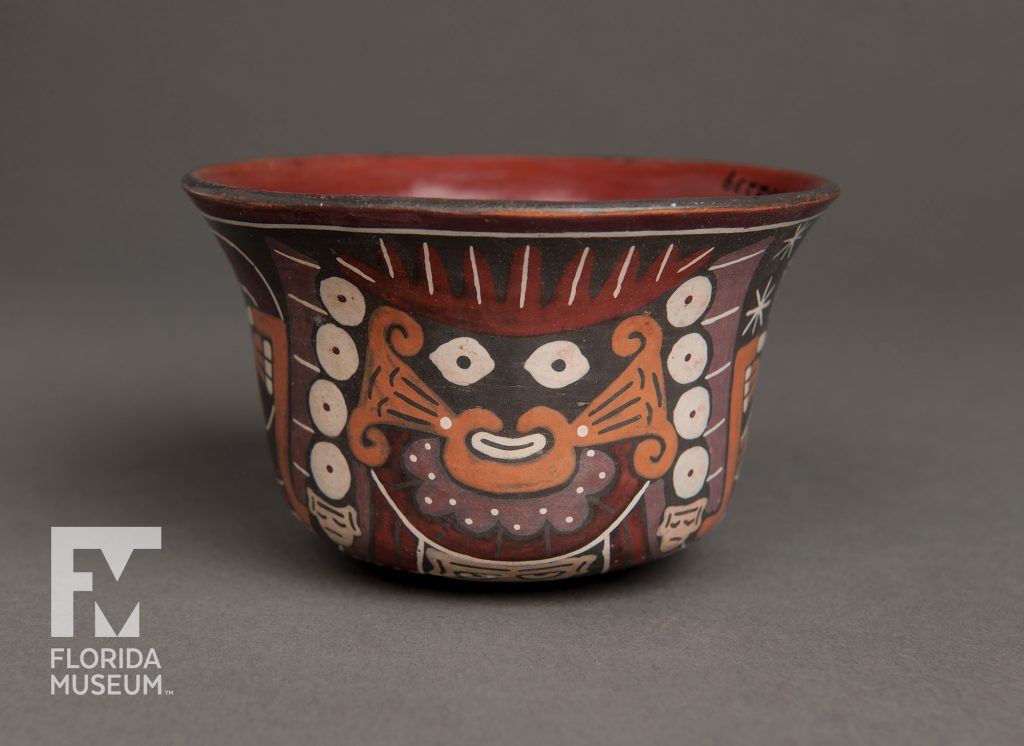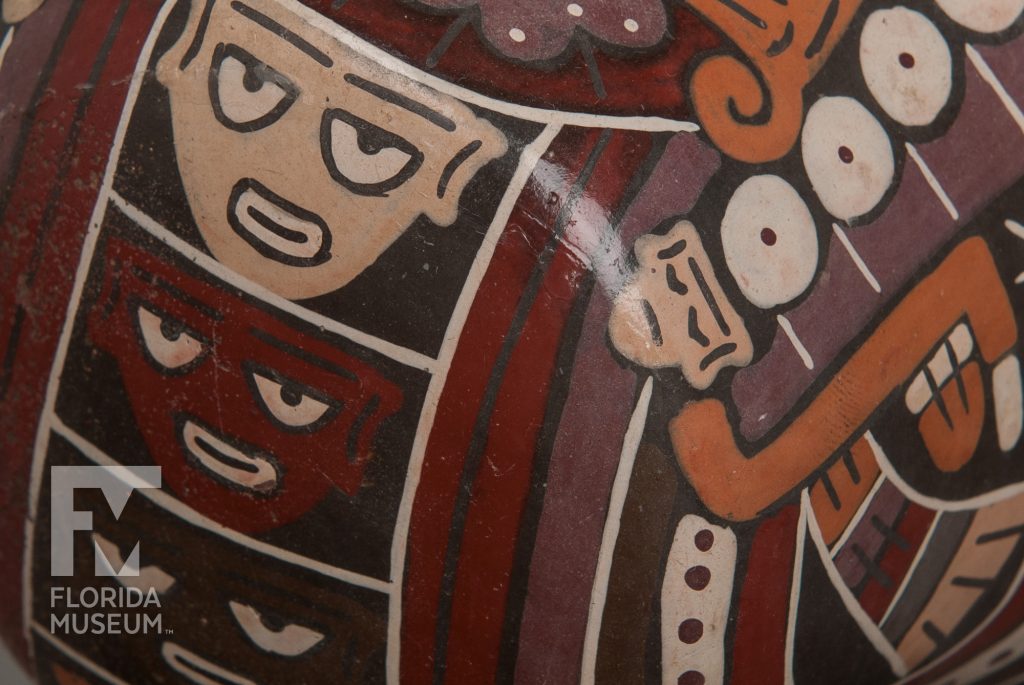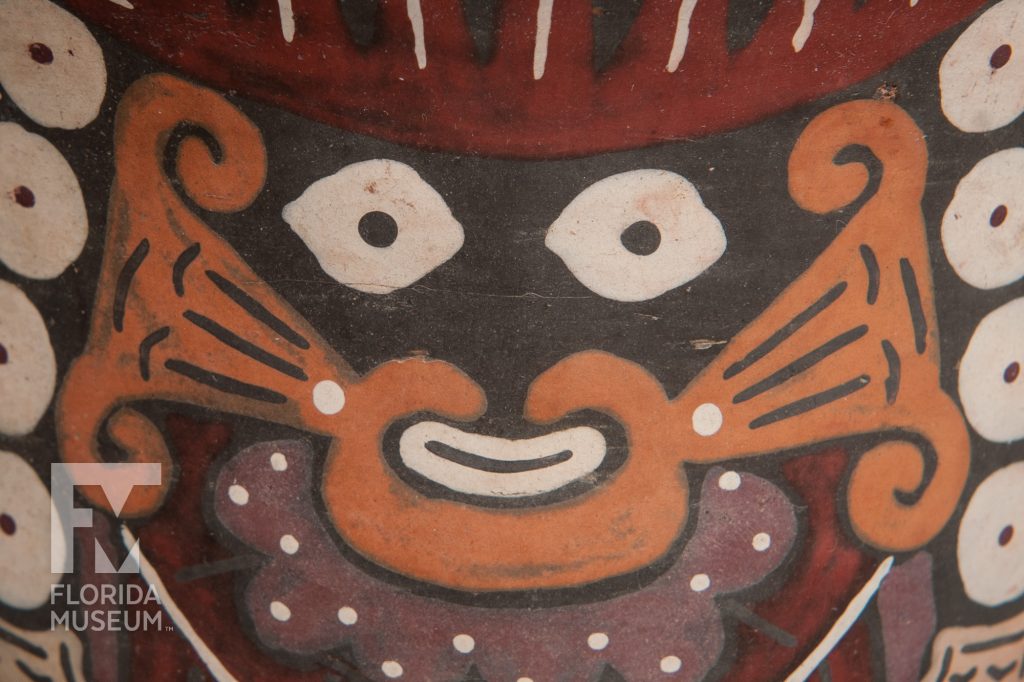The Nazca people of Peru painted with incredible detail and many colors, resulting in beautiful pottery. The central figure on this small bowl is a fox deity, known in ancient Peruvian religion as the animal counterpart of the moon.
Summary
Polychrome Ceramic Bowl
Made by Nazca people, Peru
Dates to ~AD 200–400
Collection
Story
This polychrome bowl from southern Peru represents the Nazca culture, which had a long occupation on the desert coast, a region where rivers allowed agriculture to flourish.
Jewel-like, it is exceptionally small and well-painted. It portrays a fascinating mythological creature, who seems to represent the fox god, a central figure in Nazca religion. The fox god recalls later images of the moon, for the Incas said they could see a fox on the moon, much like we see a man on the moon. The frontal face of the fox god has a whiskered mask but his body has human traits like many animal gods in ancient Peru.
The fox god is flanked by two snake-like creatures, perhaps related to images of the Milky Way known from later times among the Quechua of southern Peru. White asterisks on the sides of the vessel probably represent stars.
The fox god’s tunic wraps around the underside of the bowl and its feet appear on the back of the vessel. The tunic is decorated with a stack of five wide-eyed faces that may represent powerful priests or attendants of the fox god.
The fox god holds another face in its right hand and two similar faces are worn as earrings. Unlike the tunic faces, these have their eyes closed in death. They are trophy heads that reference the cult of warfare, important throughout ancient Peru. This may have been ritualized warfare associated with beliefs about agricultural fertility, for trophy heads are sometimes interchangeable with plant images in Nazca art.
Susan Milbrath
Curator, Latin American Art & Archaeology*
Florida Museum of Natural History
Exhibit
On display Sept. 23, 2017-Jan. 7, 2018, Rare, Beautiful & Fascinating: 100 Years @FloridaMuseum celebrated the Museum’s rich history. Each Museum collection was asked to contribute its most interesting items and share the stories that make them special. Though the physical exhibit is closed, this companion website remains online, providing an opportunity to experience the Florida Museum’s most treasured specimens.
Exhibit Area: Objects Tell Stories
Theme: Ancient Artifacts
 Want to see more? Explore more than 300 breathtaking color photos of plants, animals, fossils and cultural heritage materials from the Florida Museum of Natural History’s collections in the award-winning book All Things Beautiful available from the University Press of Florida.
Want to see more? Explore more than 300 breathtaking color photos of plants, animals, fossils and cultural heritage materials from the Florida Museum of Natural History’s collections in the award-winning book All Things Beautiful available from the University Press of Florida.
*This title was accurate at the time the exhibit was on display in 2017. Please visit the collection website to verify current staff and student information.



